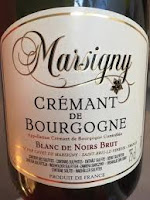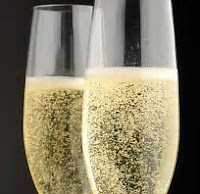After numerous wine tastings, winemaker dinners and
stay-and-play golf outings in the Napa Valley, my wife and I finally
pulled the trigger and moved there from the San Francisco Peninsula in the Fall
of 2015.
There were several reasons for
our move, but one of the main ones was to enjoy, as full-time residents, the
warm Mediterranean climate. There are, clearly,
other benefits of residing in Northern California’s Wine Country, and in future
articles I may comment on some of them.
We quickly learned that high 80 and mid 90-degree
temperatures occur far more often than the breezy 60s and 70s to which we were
previously accustomed.
And in a welcomed
and refreshing change to our lifestyle, alfresco lunches and dinners, whether
at local restaurants or in our back-yard patio, also became more common than
before.
While we still pour Sauvignon
Blanc, oak free European whites and dry Rosés to accompany the food, I have
come to an appreciation, sip by sip, of a new weekday and weeknight alternative:
Lower priced Champagne and Sparkling wine.
Seasoned wine enthusiasts
know all Champagne is Sparkling wine, but they also know not all Sparkling wine
is Champagne. The latter is an appellation-protected name and winemaking technique (méthode champenoise)
that produces the world’s reference point for sparkling wine.
While other regions in France and Europe make their
own Sparkling wine, it usually embodies different winemaking procedures, different
names, and very different grapes.
Their
sparklers are known as Cremant in France, as Cava in Spain, Sekt
in Germany and as Prosecco in Italy. New World producers, especially in California,
tend to follow the above Champagne method, but still label the product as
Sparkling wine. Clearly, everybody loves
a Bubbly!
No question, Sparkling wine is the undisputed beverage
of choice at New Year’s Eve, weddings, anniversaries and other “celebratory occasions.” However, the pleasures it delivers for those events
can also be enjoyed at any weekday lunch or dinner, no matter how ordinary the occasion
or recipe
For recipes whose weight, texture, seasonings and preparation methods
point to white wine as the likeliest pairing, Sparkling wine can, in most
cases, be a viable alternative. It shares many of their qualities, (crisp
acidity combined with herbal and citric notes) and in that sense, there will be
little or no need to adjust one’s palate to the sparkling alternative.
Prior to my Champagne epiphany, Sparkling wine had
already proved its worth as an aperitif and dessert accompaniment.
Though it should not have surprised me, I also
am slowly discovering its flexibility with more main course food. Last night’s Linguine con Vongole, aka steamed
clams over pasta, was an easy pairing. Several
days ago, Panko-topped, roast Halibut was a perfect 100, as were last week's Provencal
spiced, grilled chicken thighs.
We normally enjoy Pinot Gris or dry Riesling with our
Choucroute and Bockwurst, but it should be a cakewalk with Sekt. Also, I expect fried
or sautéed fish, chicken or pork will embrace Sparkling wine, as will fish
tacos, the current restaurant rage for small plate food. (Chinese stir fry should be a no-brainer). And, while I have yet to try it, a lush, Blanc
de Noir or Rosé with lightly spiced, grilled red meats may yield some interesting
results.
No matter your preference for Chardonnay, Pinot
Grigio, or Sauvignon Blanc, the underlying crisp, oak-free, palate-cleansing characteristics
of Sparkling wine will make for an easy palate transition.
In many respects, Sparkling wine is a nifty,
easy drinking amalgam of those varietals, and the effervescence, of course, is
the visual, mood-enhancing bonus that helps seal the deal.
Finally, with a little low-risk, exploratory effort on
your part, I believe that Sparkling wine may well become a new addition to your
weekday wine and dine options. Spain’s
Cava and Italy’s Prosecco are good, economical starting points, followed by the
several California producers that are owned by Champagne companies. (Be sure to note their various styles and sweetness levels.) After that, if your palate is up to the test,
a few French or American artisan producers should round out and reward the pursuit.









No comments:
Post a Comment